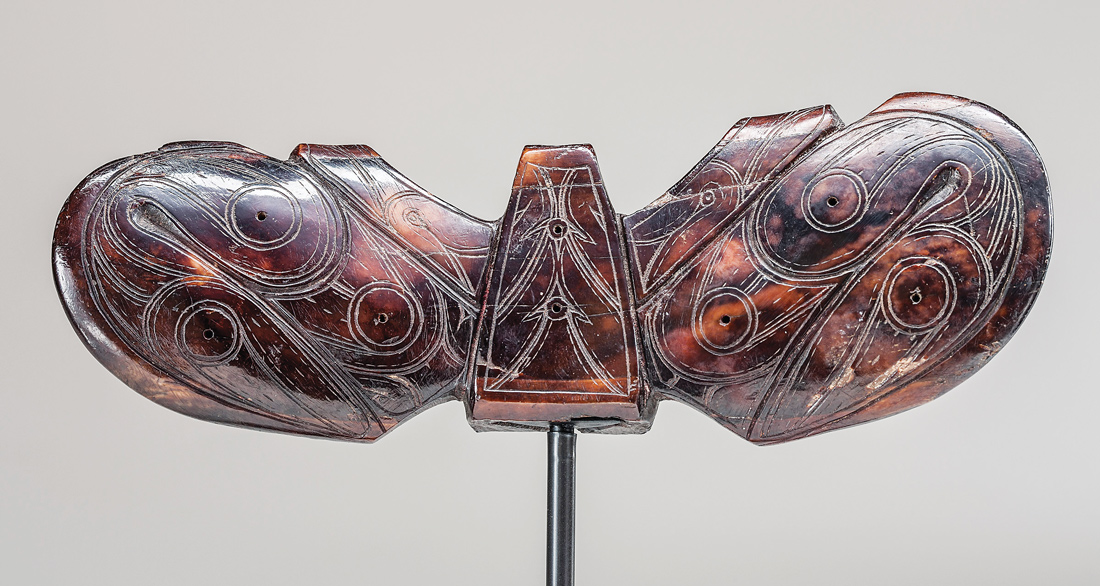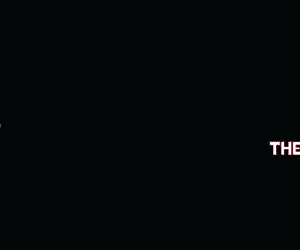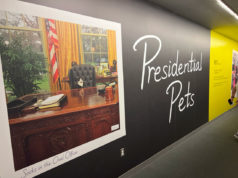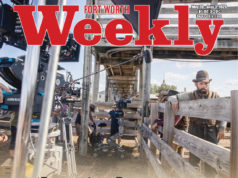The Amon Carter Museum of American Art is hard to get to right now because of the extensive remodeling that the venue is undergoing, which has shut down the parking lot. It makes sense that, for now, the museum isn’t taking in any blockbuster shows like the one from the Art Institute of Chicago last year. Unfortunately, the Carter’s current exhibit, Indigenous Beauty: Masterworks of American Art from the Diker Collection, feels like something cut-rate that the museum took in for a time when they knew access would be a problem. It’s not that the artifacts on display aren’t beautiful. It’s that there isn’t enough context for them.
It may be the museum bit off more than it could chew here. As the exhibit acknowledges, Native American tribes ranged from the Arctic Circle all the way down to Mexico, spawning a vast array of widely different cultures. To complicate things, the exhibit also goes all the way to the present day, showing pieces by contemporary artists who intentionally work in traditional veins. Not surprisingly, these look in better condition than the pieces that were actually used in daily life. The “ivory” pipe made by Tammy Garcia and Preston Singletary is an eye-catching piece of work in the Tlingit tradition of carving from walrus tusks, though this 2010 work is actually made of blown glass, since the art world now frowns on killing animals to make one’s art. These are good to see, but they widen the scope of a show that needs more focus.
Worse still is the lack of explanations in the exhibit itself. Of course, some of the information behind the objects (such as the Sugpiaq masks) has been lost to history, and the elegantly carved Old Bering Sea harpoon counterweight is accompanied by a drawing illustrating where it was originally placed on the weapon. However, what excuse is there for using no text at all present the ornate club used by Nuu-chah-nulth tribe with animal heads carved into the handle? I learned from the book accompanying the exhibit that because of the club’s long handle and short blade, historians think it was used as a ceremonial object rather than as an actual weapon. You shouldn’t have to buy a $55 book to get that sort of basic information.
What this show needs is a video component. So many of the artifacts here were used in various ceremonies, it would be nice to actually see those ceremonies being carried out rather than having their purpose written out in text. How was the Tlingit rattle, painted to give a startling resemblance to a Chinook salmon, used in life? Video would also help us better appreciate the stunning woven baskets in the exhibit to understand how these finely wrought objects (like Louisa Keyser’s 1907 basket with a “harbor light” design) were made.
If Indigenous Beauty fails from an ethnological standpoint, it is still a treat to look at. A monumental depiction of the Battle of Little Bighorn drawn on muslin cloth is a dynamic war painting with a distinctively non-Western sense of perspective and a great, whirling sense of energy. (The text credits this to Standing Bear, a chief of the Ponca tribe, but it seems to be the work of Kicking Bear, a Lakota Sioux warrior and artist who fought at the battle.) Meanwhile, the black manta woven by the Pueblo Indians is gorgeous piece of fabric with a red emblem in the center, an unusual feature that appears to be influenced by Spanish designs. On the other end of the spectrum is the grotesque power of the Tsimshian rattle shaped like a leering shrunken head and decorated with human hair.
Most spectacular is the section of the exhibit regarding beadwork by the Eastern and Plains Indians. The natives tended to favor “seed beads” made in Venice and Bohemia and obtained through trade with the white man. An Ojibwa heddle woven sash bears a striking red design, while a Muscogee shoulder bag and its strap boast bright floral designs against a background of deep navy blue. I’d be remiss if I didn’t mention the blanket strap from one of the North Dakota tribes, with circles divided into blue and silver pie wedges that recall the elemental power of Clyfford Still’s geometric designs.
Indigenous Beauty does live up to its title, but its failure to adequately explain what we’re looking at makes it feel like something hastily thrown together. Even accounting for the Carter’s current transition, museumgoers deserve something more considered.
[box_info]Indigenous Beauty: Masterworks of American Art from the Diker Collection
Thru Sep 13. Amon Carter Museum of American Art,
3501 Camp Bowie Blvd, FW. Free. 817-738-1933.[/box_info]













Please note that information on Sugpiaq masks has not been lost to history. A 2010 publication from the University of Alaska Press, produced in collaboration with the Alutiiq Museum, explores Sugpiaq masking traditions. The book reviews a collection of about 100 masks from Alaska’s Kodiak Archipelago, collected by French anthropologist Alphonse Pinart. It provides a detailed review of mask use based on a study of the collection, as well as archaeological, ethnographic, linguistic, and historical information on Sugpiaq masks and ceremonial traditions.
Giinaquq: Like A Face, Suqpiaq Masks of the Kodiak Archipelago
by Sven Haakanson, Jr. and Amy Steffian
2010 University of Alaska Press
https://www.alaska.edu/uapress/browse/detail/index.xml?id=352